Village by the Sea
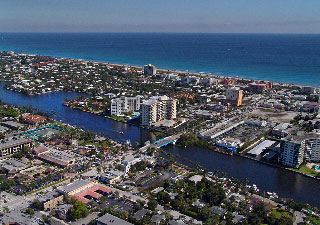

Roughly 45 minutes north from the hustle and bustle of Miami is a progressively quaint, oceanfront community that is South Florida’s answer to the Hamptons. This city is Delray Beach and its renaissance is more than 20 years in the making.
“Everything has a plan,” says Joe Gillie, executive director of Old School Square, a national historic site located on Atlantic Avenue in the heart of Delray Beach. “This city has gone back to its roots and the result is a modern village with a sense of self. We’ve made the arts the fundamental unifying element, which is why Old School Square is the center of downtown Delray Beach.”
Old School Square is a prime example of adaptive restoration, a technique utilized for many of Delray’s vintage buildings. Originally built in 1913 as an elementary school, the structure for which the site is named has been updated to the times, yet still maintains the innocence of a simpler era. Following its restoration, the nostalgic building became home to the Cornell Museum of Art and History, the Crest Theatre, and the city’s primary entertainment pavilion.
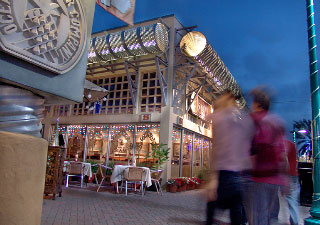
The square is the soul of the community with more than 40 restaurants, art galleries, hotels and the ocean within walking distance. The result is an urban environment rich with character. Art and Jazz on the Avenue is the last Thursday of every month drawing crowds of 20 to 40 thousand. And just a few blocks north of Atlantic Avenue, Pineapple Grove brings even more art and urban culture.
Many of the residents that live around Old School Square reside in vintage bungalows and cottages. The city planners, however, took into account the need for additional luxury housing to accommodate new residents who are choosing Delray’s restored urban environment for both primary and secondary homes. They allotted a 3-acre piece of property directly across from Old School Square to construct state-of-the-art luxury residences that will rise no higher than 48 feet. A competition was held to choose which developer would have the privilege to build the city’s signature development.
“We chose Bill Morris and Southcoast Partners to construct Worthing Place,” explains Gillie. “Bill is a native of the area. He knows where this community has been and where it is going.”
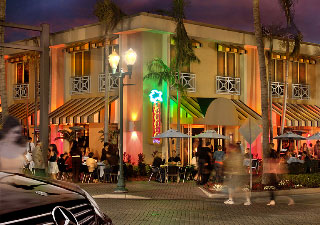
Worthing Place – named after Worthing Park, which is directly in front of the development and home to the neighborhood’s weekly green market – is a 217 unit luxury residential development designed for the discerning needs of affluent professionals and empty nesters. The mixed-use project will have one-, two- and three-bedroom units and more than 12,000-square-feet of retail space. Of course location will be Worthing Place’s primary amenity, but the building itself will have services that rival those of five-star resorts.
“For starters, Worthing Place will have beach club access,” says developer William Morris, “which is a 5 minute bike ride or 10 minute walk down Atlantic Avenue to the ocean. But then there are the building’s amenities that will rival those of the Four Seasons and Ritz Carlton. Resort style concierges will accommodate residents when they are at home or away. Our fitness center will be better than most health clubs. The bar, club room and business center will provide convenience and a sense of community for residents. It’s an exciting project.” (Worthing Place Video)
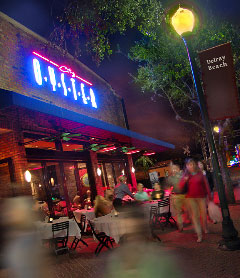
A few blocks east from Old School Square and Worthing Place is the Intracoastal Waterway. This boater’s paradise runs from Virginia through the State of Florida into Miami. The region around Atlantic Avenue, though, is essentially the waterway’s central area for Southern Florida. There is ample docking for boats and yachts of various sizes, and the scenery around Delray Beach, north into Palm Beach, and south through Fort Lauderdale and Miami is unparalleled.
“I have a 56-foot Pershing,” says Tom Sacks, a part-time South Florida resident. “There’s nothing better than cruising the Intracoastal and into the ocean with my girlfriend and our friends. The yachts and estates that line the Intracoastal are as glamorous as those in the Amalfi Coast, Sag Harbor or Newport Beach.”
One block west from Old School Square, also on Atlantic Avenue, is the Delray Beach Tennis Center, a full-service public tennis facility with 14 clay courts, 7 hard courts, and an 8,200 seat stadium. The tennis center was the home site of the 2007 and 2005 Fed Cup (USA vs. Belgium), the 2004 Davis Cup (USA vs. Sweden), the Delray Beach ITC (ATP Event), and the Chris Evert Pro Celebrity Tournament. The stadium also hosts other events, such as concerts and national television commercials.

Fifteen miles north of Delray Beach is Florida’s answer to Bridgehampton Polo. The International Polo Club Palm Beach prides itself on presenting the game of polo in the way it is meant to be enjoyed, where polo players and fans of all ages gather together in a world-class venue for the sport and the lifestyle. Thousands of fans converge upon this setting every year for seasons that feature a series of renowned polo tournaments that attract the world’s finest players. Their line-ups include prestigious high-goal competitions as well as an impressive social calendar, which features a multitude of events that raise money for numerous charities.
Business and commerce are also key elements for Delray Beach. The city’s revitalization has had a yearly $21 million economic impact. “We’re a city that favors the small business owner,” explains Gillie. “We encourage homegrown businesses and work to support them. This strategy helps us to maintain our renowned village atmosphere. And when investors choose Delray, they can feel safe that this community will preserve its small town roots and not be overwrought with development like other U.S. cities. We have strict zoning laws with significant height restrictions. Delray Beach will not lose the charm that makes it special.”
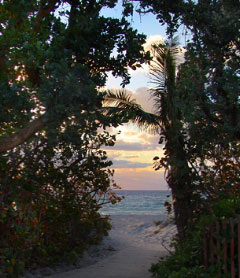
With world-class tennis and polo facilities, the Intracoastal Waterway and Atlantic Ocean set against a backdrop of a thriving urban village, the neighborhood’s core always reverts back to the arts and culture that have been a part of Delray Beach since the Bijou Theater was built in 1914. And with a first-class development like Worthing Place in the center of it all, downtown Delray has become one of this country’s most progressive luxury destinations – a model of intelligent urban planning that has been, and will continue to be, emulated by other communities around the world.
Worthing Place website


